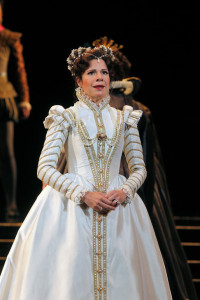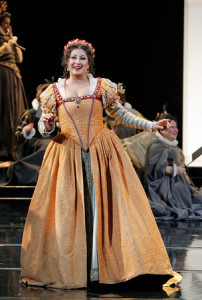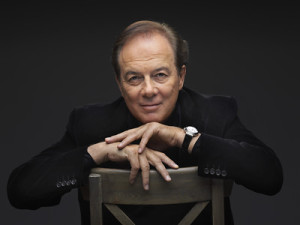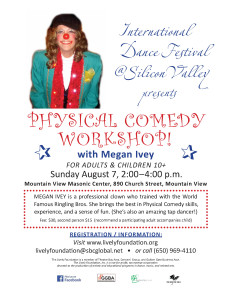 Incredible fun! Learn to fall (and get back up!). SPECIAL OFFER: Come with a pal, a kid, a neighbor, whomever; the first person pays $30, the second only $15. It’s the best deal for the most fun.
Incredible fun! Learn to fall (and get back up!). SPECIAL OFFER: Come with a pal, a kid, a neighbor, whomever; the first person pays $30, the second only $15. It’s the best deal for the most fun.
Author Archives: Leslie
FULL DAY OF DANCE©: 5 Amazing Classes!!
Welcome! International Dance Festival@Silicon Valley
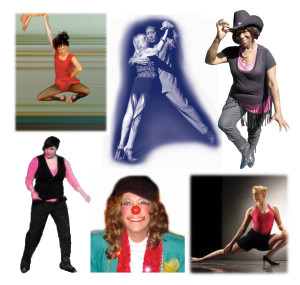 WELCOME to the 5th Anniversary Season of the International Dance Festival@Silicon Valley! IDF@SV 2016 offers classes, workshops, performances. There are performance opportunities for experienced dancers, a chance to create your own dance and perform it, opportunities to try a dance style you’ve never tried before or even to try dancing if you’ve never tried it before. Our Festival Concert features exquisite dances by artists of classical Indian Bharatanatyam and Kathak, Tap Dance by Audreyanne Covarrubias & Megan Ivey, Contemporary ballet by Leslie Friedman, and a chance to join Etta Walton in her Electric Line Dances. The Festival welcomes advanced & professional dancers AND complete beginners, ages from mid-teens to any adult age. The Physical Comedy workshop welcomes ages 10 and up…and up! Here are the activities of IDF@SV 2016. To learn more about each part of the Festival, please click on its name to link to its page with specific information.
WELCOME to the 5th Anniversary Season of the International Dance Festival@Silicon Valley! IDF@SV 2016 offers classes, workshops, performances. There are performance opportunities for experienced dancers, a chance to create your own dance and perform it, opportunities to try a dance style you’ve never tried before or even to try dancing if you’ve never tried it before. Our Festival Concert features exquisite dances by artists of classical Indian Bharatanatyam and Kathak, Tap Dance by Audreyanne Covarrubias & Megan Ivey, Contemporary ballet by Leslie Friedman, and a chance to join Etta Walton in her Electric Line Dances. The Festival welcomes advanced & professional dancers AND complete beginners, ages from mid-teens to any adult age. The Physical Comedy workshop welcomes ages 10 and up…and up! Here are the activities of IDF@SV 2016. To learn more about each part of the Festival, please click on its name to link to its page with specific information.
INTERNATIONAL DANCE FESTIVAL@SILICON VALLEY: ALL EVENTS
Antara Bhardwaj: Tale of a Kathaka in Mountain View
Kathak dancer, Antara Bhardwaj, presented by Sangam Arts and EnActe Arts, performed Tale of a Kathaka, an exciting program, July 9, 2016, at the Mountain View Center for the Performing Arts. She demonstrated her mastery of the classical Indian dance with its origins in Northern India, and her ability to captivate an audience with her interpretations of the tradition. The enthusiastic audience found much to applaud and also much to think about. Ms Bhardwaj’s program included collaborations with other artists. It is her special focus to work with artists of other traditions. The first dance on Tale of a Kathaka combined Andrea Sendek’s Belly Dance group, Khepri Dance Company, with Kathak dancers from Ms Bhardwaj’s new group, Antara Asthaayi Dance. The contrast of the Khepri dancers’ silky, translucent costumes with the Kathak dancers in jewel tone costumes added visual pleasure to the dancing. The two dance forms share movement themes of spiraling, vivid turning. Named Deewani Mastani and based on a character from a popular Bollywood film, Bajirao Mastani, the dance was an exuberant beginning.
Ms Bhardwaj wisely chose outstanding musicians to accompany her work and perform selections of their own. The Sarangi-Sarod Jugalbandi, a duet for Sarangi artist Pankaj Mishara and Sarod artist Ben Kunin, was fascinating in its own right and also a great program choice between dances. A sitar solo by Rajib Karmakar was an excellent addition to the program. It was a treat to be in the audience for Salar Nader, renowned Tabla artist, as well. Vocalists included Vaishali Bhardwaj, Leah Brown, and Divya Chandran.
 Among Ms Bhardwaj’s strengths as a performer is her comfort addressing her audience verbally or through dance. She deepened appreciation for her work by explaining aspects of Kathak. For example, she demonstrated the counts of the complex rhythms. On a more personal level, she talked about falling in love with the movie dances she saw as a youngster and her determination to dance in “twirly skirts.” She communicates her understanding of her art and a confident presence which could light up all of Silicon Valley. One selection, Journey of the Steam Engine, had special resonance for this viewer. It was a signature piece of Pandit Chitresh Das, Ms Bhardwaj’s guru, and had been created by his guru, Pandit Ram Narayan Mishra. As she told its story and danced, I remembered my first meeting with Chitresh Das and could see him in that moment. His energy seemed to expand the stage. Ms Bhardwaj is Dance & Music director of The Conference of the Birds, which appears Sept. 9-11, at the Mexican Heritage Plaza, San Jose. A production combining diverse ethnic dance groups, it promises an extraordinary event.
Among Ms Bhardwaj’s strengths as a performer is her comfort addressing her audience verbally or through dance. She deepened appreciation for her work by explaining aspects of Kathak. For example, she demonstrated the counts of the complex rhythms. On a more personal level, she talked about falling in love with the movie dances she saw as a youngster and her determination to dance in “twirly skirts.” She communicates her understanding of her art and a confident presence which could light up all of Silicon Valley. One selection, Journey of the Steam Engine, had special resonance for this viewer. It was a signature piece of Pandit Chitresh Das, Ms Bhardwaj’s guru, and had been created by his guru, Pandit Ram Narayan Mishra. As she told its story and danced, I remembered my first meeting with Chitresh Das and could see him in that moment. His energy seemed to expand the stage. Ms Bhardwaj is Dance & Music director of The Conference of the Birds, which appears Sept. 9-11, at the Mexican Heritage Plaza, San Jose. A production combining diverse ethnic dance groups, it promises an extraordinary event.
SF Symphony: Mahler & Michael Tilson Thomas
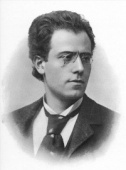 Gustav Mahler’s Symphony No. 2 in C minor, often called the “Resurrection” Symphony, made up the entire program at San Francisco’s Davies Symphony Hall, Saturday, July 2. There is more than enough beauty, mystery, passion, and inspiration to fill multiple performances of this one masterpiece. Music Director and Conductor Michael Tilson Thomas led his orchestra through a lifetime in ninety minutes of experience, poetry, struggle and sublime music.
Gustav Mahler’s Symphony No. 2 in C minor, often called the “Resurrection” Symphony, made up the entire program at San Francisco’s Davies Symphony Hall, Saturday, July 2. There is more than enough beauty, mystery, passion, and inspiration to fill multiple performances of this one masterpiece. Music Director and Conductor Michael Tilson Thomas led his orchestra through a lifetime in ninety minutes of experience, poetry, struggle and sublime music.
 Michael Tilson Thomas conducting Mahler
Michael Tilson Thomas conducting Mahler
MTT has established a reputation as a profound artist and interpreter of Mahler. The many Grammy awards for his Mahler recordings with the SF Symphony attest to that. However, there is never anything “been there, done that” about his performances. At this one, the SFS and its Maestro were truly imbued with Mahler’s energy and spirit. It was as though they channeled the composer and brought him back to us. As Mahler wrote in the poetry sung in the triumphant last movement, “With wings that I have won/in the heat of love’s struggle/I will soar/to the light that no eye can comprehend.” In this performance of the Resurrection symphony, it was Mahler himself who rose again. For the audience, his vision became our vision. We were lifted beyond ourselves.

 Mezzo-Soprano Kelley O’Connor; Soprano Katrina Gauvin
Mezzo-Soprano Kelley O’Connor; Soprano Katrina Gauvin
The last two movements were aided and fulfilled by the soloists, Kelley O’Connor and Katrina Gauvin, and the San Francisco Symphony Chorus. When the Chorus rose as one in the loft seating above and behind the orchestra, it was one of the powerful theatrical moments of the symphony’s performance. Mahler created great, majestic music, but he did not write it to be in artistic isolation. The voices extend the life of the instruments, the presence of the singers and the chorus enlarges the community from which the music arises and in which it dwells. There are other events in the symphony that leave such a powerful image of the making of music and the mission of the music that one can see the extension of life through this art. When the percussionists all beat on their drums, both hands holding drumsticks and beating rapidly, when the horn players quietly walk off stage in order to play from afar out of sight, even when the chorus members steadily turn their pages in unison and we see the turning of the white pages against their black clothes: it is all the total theater that Mahler made in order to make his art in as many dimensions as life. Reading the descriptions of the movements suggests this: “In quietly flowing motion,” “Very solemn but simple, like hymn,” “Bursting out wildly.” The descriptive power of the music calls forth every emotion, but in the end, “Slow. Misterioso,” there is mystery. On a cd, it will sound wonderful, but being there while Michael Tilson Thomas, the San Francisco Symphony, singers and Chorus live it is totally different.
Pictures from top, Gustav Mahler; picture of Michael Tilson Thomas by Kristen Loken, courtesy of the SF Symphony; Kelley O’Connor; Katrina Gauvin.
Luisotti, Verdi, Don Carlo: Opera Greatness in San Francisco
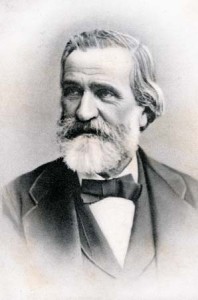 The San Francisco Opera presented Don Carlo, Giuseppi Verdi’s tragic masterpiece of political and personal puzzles, June 29. It was beautiful and terrifying. Led by SF Opera Music Director Conductor Nicola Luisotti, the performance went to the heart of Verdi’s great music and captured the hearts of the audience.
The San Francisco Opera presented Don Carlo, Giuseppi Verdi’s tragic masterpiece of political and personal puzzles, June 29. It was beautiful and terrifying. Led by SF Opera Music Director Conductor Nicola Luisotti, the performance went to the heart of Verdi’s great music and captured the hearts of the audience.
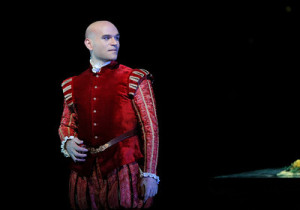 Special excitement in this Don Carlo was seeing two leads in role debuts. Michael Fabiano, American tenor, made an impressive debut as Don Carlo. He had critical and audience praise for his Rudolfo in SF Opera’s Luisa Miller, fall, 2015. In addition to leading roles from Paris to New York, in 2014 he won the Richard Tucker and Beverly Sills Awards. Ana Maria Martinez made her debut as Elisabetta, Don Carlo’s beloved who married the King, Don Carlo’s father. She has sung starring roles for the SF Opera: Pamina in Die Zauberflote, 2003, and Micaela in Carmen, 2006, Amelia Grimaldi in Simon Boccanegra, 2008. She has starred in productions at the Met in NYC, Houston Grand Opera, Lyric Opera of Chicago, and through Europe.
Special excitement in this Don Carlo was seeing two leads in role debuts. Michael Fabiano, American tenor, made an impressive debut as Don Carlo. He had critical and audience praise for his Rudolfo in SF Opera’s Luisa Miller, fall, 2015. In addition to leading roles from Paris to New York, in 2014 he won the Richard Tucker and Beverly Sills Awards. Ana Maria Martinez made her debut as Elisabetta, Don Carlo’s beloved who married the King, Don Carlo’s father. She has sung starring roles for the SF Opera: Pamina in Die Zauberflote, 2003, and Micaela in Carmen, 2006, Amelia Grimaldi in Simon Boccanegra, 2008. She has starred in productions at the Met in NYC, Houston Grand Opera, Lyric Opera of Chicago, and through Europe.
Nadia Krasteva, Bulgarian mezzo, in her debut with the SF Opera, was outstanding in her role as Princess Eboli. In love with Don Carlo, she defames him and the Queen, hoping to catch him as he falls. From her first appearance, singing in the Queen’s garden, one feels she makes schemes even as she dances. Ms Krasteva was so good at being bad, a female Iago who regrets too late.
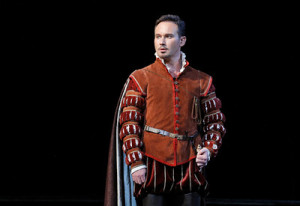 Mariusz Kwiecien as Rodrigo, Don Carlo’s devoted friend, was the soul of the opera. His voice was true, strong and beautiful. His optimistic proclamation of allegiance to liberty may reflect part of Verdi’s own hopes. Mr. Kwiecien, a Polish baritone, was superb. His character gives the audience someone to admire without equivocation, and yet, in this atmosphere of dread, he is doomed.
Mariusz Kwiecien as Rodrigo, Don Carlo’s devoted friend, was the soul of the opera. His voice was true, strong and beautiful. His optimistic proclamation of allegiance to liberty may reflect part of Verdi’s own hopes. Mr. Kwiecien, a Polish baritone, was superb. His character gives the audience someone to admire without equivocation, and yet, in this atmosphere of dread, he is doomed.
When Rodrigo dies, something of Verdi dies, too. Associated with the Risorgimento movement in Italy, Verdi loved not only Italy, but also the ideals of the Rights of Man (we may take “man” to mean the rights of Humanity). At the request of Prime Minister Cavour, the leader of the Italian unification movement, Verdi was a member of Parliament. When he died, in 1901, a quarter of a million Italians went into the streets, marching to the music of the Chorus of Hebrew Slaves from Verdi’s Nabucco, conducted by Toscanini. June 29 was perhaps the third time this Verdi fan had seen Don Carlo. So much can depend upon the time in which one sees it. The second time was a different era in the US.* Either what the directors chose to emphasize or what I felt most was the struggle for freedom against the totalitarian weight of the political, murderous Church and the murderous State. There was endless conniving, spying, and absence of respect for human life. This time, I absorbed the hopelessness of individuals striving for change and the loss of private lives. Perhaps the directors found more truth in cynicism in this election year.
Ferruccio Fulanetto sang the role of Philip II. He was superb. Rodrigo asks the King to end the Flanders war. The King decides he can trust Rodrigo. When Mr. Fulanetto warned Rodrigo to beware the Inquisition, it was one of the most terrifying moments of theater I can remember. In excellent voice, Mr. Fulanetto’s King Philip is in a position of supreme power and yet suspicious of his wife and overwhelmed by the Inquisition’s reign of terror. Exiting to the so-called real world in the first intermission, I could not shake the feeling of fear.
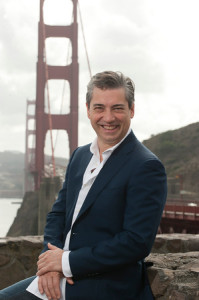 Nicola Luisotti announced his depature from leadership of the SF Opera. Lovers of Verdi should plan ahead: Maestro Luisotti will conduct Aida, Nov.5-Dec. 6, 2016, and Rigoletto, May 31-July 1, 2017. These performances are an opportunity to cheer him for the joy in music he has brought to San Francisco. Photos, except the unattributed portrait of Verdi at the top, are all ©Cory Weaver/SF Opera. *I first saw Don Carlo in a school group. We went to the Paris Opera. Seats were too expensive; we took turns going in a box. I do not think I knew the story. It didn’t matter. The gorgeous setting, beautiful voices, enormous bouquets all added up to dazzling Theater, an impact like the first time one sees a mountain.
Nicola Luisotti announced his depature from leadership of the SF Opera. Lovers of Verdi should plan ahead: Maestro Luisotti will conduct Aida, Nov.5-Dec. 6, 2016, and Rigoletto, May 31-July 1, 2017. These performances are an opportunity to cheer him for the joy in music he has brought to San Francisco. Photos, except the unattributed portrait of Verdi at the top, are all ©Cory Weaver/SF Opera. *I first saw Don Carlo in a school group. We went to the Paris Opera. Seats were too expensive; we took turns going in a box. I do not think I knew the story. It didn’t matter. The gorgeous setting, beautiful voices, enormous bouquets all added up to dazzling Theater, an impact like the first time one sees a mountain.
International Dance Festival@Silicon Valley: Posters!
There are four wonderful poster/flyers for IDF@SV 2016. The beautifully designed, informative pages were created by Lively Foundation Designer, Jonathan Clark. Here they are: #1) includes all the Festival events, #2) Full Day of Dance©, #3) Physical Comedy Workshop, #4) Contemporary Tech & Rep Workshop. Please share the information with all your friends and friendly strangers, your dancer pals and those who think they can’t dance (bring them to Full Day, and they will surprise themselves!!).
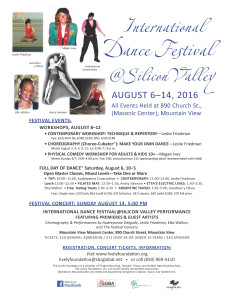 This one has schedules, fees, descriptions of events. Choreo-Cubator© workshop begins Aug. 2, 4, 5 before full Festival opens on Aug. 6.
This one has schedules, fees, descriptions of events. Choreo-Cubator© workshop begins Aug. 2, 4, 5 before full Festival opens on Aug. 6.
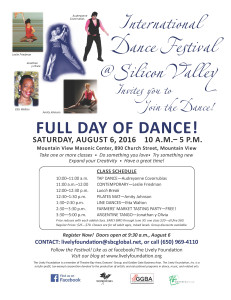 FULL DAY OF DANCE!© Best deal & most fun: take them ALL!
FULL DAY OF DANCE!© Best deal & most fun: take them ALL!
 PHYSICAL COMEDY WORKSHOP: WOW! great for any age adult and younger people age 10 and up. So much fun, you have to do it!
PHYSICAL COMEDY WORKSHOP: WOW! great for any age adult and younger people age 10 and up. So much fun, you have to do it!
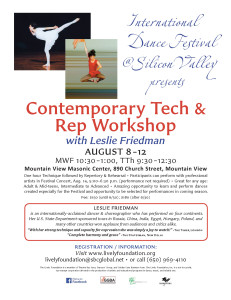 Contemporary Tech & Rep Workshop! best for Intermediate-Advanced/Professional Dancers. Tech class followed by learning repertory to perform in the Festival Concert, a public, ticketed performance with performances by the IDF@SV artist/teachers. (participants not required to perform.)
Contemporary Tech & Rep Workshop! best for Intermediate-Advanced/Professional Dancers. Tech class followed by learning repertory to perform in the Festival Concert, a public, ticketed performance with performances by the IDF@SV artist/teachers. (participants not required to perform.)
Registration & Payment Questions for IDF@SV 2016
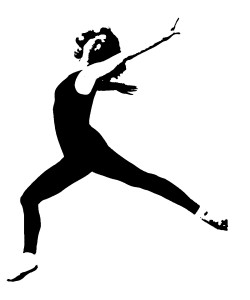 The great news is that registrations are coming in now for the most wonderful, unique summer festival: International Dance Festival@Silicon Valley, 2016. Be part of the beauty and fun; come dance with us! Registration form is on this blog. Go to http://www.livelyfoundation.org/wordpress/?cat=2 Just scroll down a bit from where you are now. You may copy the questions on the reg form and email it to The Lively Foundation: livelyfoundation@sbcglobal.net
The great news is that registrations are coming in now for the most wonderful, unique summer festival: International Dance Festival@Silicon Valley, 2016. Be part of the beauty and fun; come dance with us! Registration form is on this blog. Go to http://www.livelyfoundation.org/wordpress/?cat=2 Just scroll down a bit from where you are now. You may copy the questions on the reg form and email it to The Lively Foundation: livelyfoundation@sbcglobal.net
 There are two ways to make your payments: You can mail a check made out to The Lively Foundation and mail it to: The Lively Foundation, Attn. Leslie Friedman, 550 Mountain View Avenue, Mountain View, CA 94041-1941. OR if you want to use your credit card, you can follow these easy steps:
There are two ways to make your payments: You can mail a check made out to The Lively Foundation and mail it to: The Lively Foundation, Attn. Leslie Friedman, 550 Mountain View Avenue, Mountain View, CA 94041-1941. OR if you want to use your credit card, you can follow these easy steps:
go to livelyfoundation.org, click on legacy website at the bottom of the landing page, you will see a home page with menu selections at its top. Select Donate. On the right side of the Donate page you will see the Paypal logo. Click on it. Please follow the directions for a donation so that The Lively Foundation, a not for profit, tax exempt organization, will not have to pay service charges to Paypal. Let us know by your registration which classes you are signing up for. THE ARTIST/TEACHERS ARE EAGER TO WORK WITH YOU and DEDICATED TO BRINGING YOU TO YOUR GREATEST DANCE EXPERIENCES!! More questions? contact livelyfoundation@sbcglobal.net
SPECTACULAR: SF OPERA ‘S JENUFA
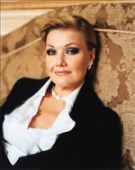 San Francisco Opera’s performance of Jenufa by Leos Janacek was spectacular, June 28, at the SF Opera House. There will be one more performance of this powerful, emotion grabbing, musically fascinating work. It’s Friday, July 1; don’t miss it. The SF Opera Orchestra, conducted by Jiri Belohavek, has never played better. The voices of the singers were stunning. Not content with making beautiful sound, the singers made their sound perfectly fit the characters they presented. Karita Mattila, pictured above, performed the role of Kostelnicka Buryjovka. From the first moment she is seen onstage, her presence becomes the tragic center of action. Her voice, suffused with knowledge and emotion, reaches into every listener. A brilliant opera star, this is her onstage debut in this role (she performed it in concert with the Czech Philharmonic Orchestra conducted by Jiri Belohavek, in April). She has made it her own.
San Francisco Opera’s performance of Jenufa by Leos Janacek was spectacular, June 28, at the SF Opera House. There will be one more performance of this powerful, emotion grabbing, musically fascinating work. It’s Friday, July 1; don’t miss it. The SF Opera Orchestra, conducted by Jiri Belohavek, has never played better. The voices of the singers were stunning. Not content with making beautiful sound, the singers made their sound perfectly fit the characters they presented. Karita Mattila, pictured above, performed the role of Kostelnicka Buryjovka. From the first moment she is seen onstage, her presence becomes the tragic center of action. Her voice, suffused with knowledge and emotion, reaches into every listener. A brilliant opera star, this is her onstage debut in this role (she performed it in concert with the Czech Philharmonic Orchestra conducted by Jiri Belohavek, in April). She has made it her own.
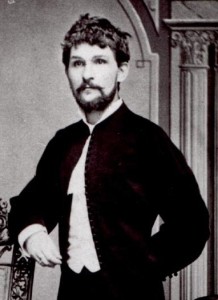 Czech composer Janacek began work on Jenufa, in 1895. It was premiered in 1904, in Brno, and in Prague in 1916. Janecek came from a village much like the one in his opera. He collected and studied music and songs from Moravia, his home region, as well as its speech patterns and expressions. In Jenufa, the characters live in a tightly knit community, isolated from outside culture. Jenufa is a young woman who loves Steva, a handsome man who owns the mill and is also a drunk and a flirt. At the beginning of the opera, she reveals that she is pregnant and prays that Steva will not be drafted but will marry her, saving her reputation and her life. Laca, another villager, has loved her all his life, but she is blind to him, especially now. The village does not offer a lot of options for an intelligent young woman. She teaches others how to read, but she cannot read the facts that Steva will only bring her trouble.
Czech composer Janacek began work on Jenufa, in 1895. It was premiered in 1904, in Brno, and in Prague in 1916. Janecek came from a village much like the one in his opera. He collected and studied music and songs from Moravia, his home region, as well as its speech patterns and expressions. In Jenufa, the characters live in a tightly knit community, isolated from outside culture. Jenufa is a young woman who loves Steva, a handsome man who owns the mill and is also a drunk and a flirt. At the beginning of the opera, she reveals that she is pregnant and prays that Steva will not be drafted but will marry her, saving her reputation and her life. Laca, another villager, has loved her all his life, but she is blind to him, especially now. The village does not offer a lot of options for an intelligent young woman. She teaches others how to read, but she cannot read the facts that Steva will only bring her trouble.
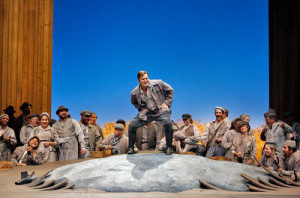 Steva brags to his friends that all the girls want him. Tenor Scott Quinn as Steva was both completely self-centered and too frightened of responsibility to have anything to do with Jenufa and her problem. In excellent voice, he performed splendidly enough to earn boos at the curtain call. He was also frightened of the Kostelnicka, village sacristan, who demanded he spend one year sober before she could let him marry Jenufa, her stepdaughter. At a loss for what to do, Jenufa hides in her stepmother’s home to have her child. Only 8 days after the birth, her stepmother has invited Steva to visit in order to convince him to marry. He refuses. In a fit of jealousy, Laca cut Jenufa’s face. She is less beautiful now and has a baby. He will marry the Mayor’s daughter instead. Laca visits and declares his love again. Desperate, the Stepmother finds a way to make this match work.
Steva brags to his friends that all the girls want him. Tenor Scott Quinn as Steva was both completely self-centered and too frightened of responsibility to have anything to do with Jenufa and her problem. In excellent voice, he performed splendidly enough to earn boos at the curtain call. He was also frightened of the Kostelnicka, village sacristan, who demanded he spend one year sober before she could let him marry Jenufa, her stepdaughter. At a loss for what to do, Jenufa hides in her stepmother’s home to have her child. Only 8 days after the birth, her stepmother has invited Steva to visit in order to convince him to marry. He refuses. In a fit of jealousy, Laca cut Jenufa’s face. She is less beautiful now and has a baby. He will marry the Mayor’s daughter instead. Laca visits and declares his love again. Desperate, the Stepmother finds a way to make this match work.
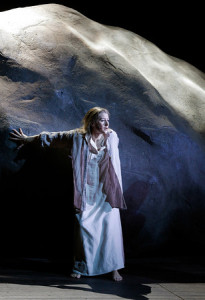 Lovely Soprano Malin Bystrom, making her debut in the role as Jenufa, experiences changes through the events of the opera. An international star, she certainly must keep Jenufa in her repertory; she was exquisite. When she enters in Act I, she is a vision of happy youth. Her movements suggest a sought after young woman whose love is fulfilled. She enters through the bright sunlight of the upstage image of ripe grain. However, the set is built so that two high walls nearly connect to each other at the point where the outside world is seen. Production Designer Frank Phillipp Schlossmann did a wonderful job of creating the enclosed, separate world of the villagers. He also uses the visual theme of stones to match the frequent mention of stones in the text. There is a possible millstone, mysterious and extra large, on stage in Act I. In Act II a stone takes up the entire interior of the Stepmother’s home. When we see Jenufa after the birth, she is weak, frightened of what will become of her, and yet loves her baby. The world of the opera might seem as distant and peculiar to 21st century San Franciscans as life on Mars. Public shame and hopelessness, real and powerfully portrayed, are the future for Kostelnicka, Jenufa and the baby.
Lovely Soprano Malin Bystrom, making her debut in the role as Jenufa, experiences changes through the events of the opera. An international star, she certainly must keep Jenufa in her repertory; she was exquisite. When she enters in Act I, she is a vision of happy youth. Her movements suggest a sought after young woman whose love is fulfilled. She enters through the bright sunlight of the upstage image of ripe grain. However, the set is built so that two high walls nearly connect to each other at the point where the outside world is seen. Production Designer Frank Phillipp Schlossmann did a wonderful job of creating the enclosed, separate world of the villagers. He also uses the visual theme of stones to match the frequent mention of stones in the text. There is a possible millstone, mysterious and extra large, on stage in Act I. In Act II a stone takes up the entire interior of the Stepmother’s home. When we see Jenufa after the birth, she is weak, frightened of what will become of her, and yet loves her baby. The world of the opera might seem as distant and peculiar to 21st century San Franciscans as life on Mars. Public shame and hopelessness, real and powerfully portrayed, are the future for Kostelnicka, Jenufa and the baby.
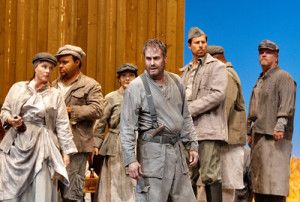 Laca agrees to marry Jenufa. Sung with great success by tenor William Burden, Laca also goes through changes from angry, violent outcast, to pacified, hopeful helpmate. This is where the internet tradition of “spoiler alert” should appear in this Hedgehog Highlight. Terrifying events will occur: the Kostelnicka confesses to her crime, the crowd tries to stone Jenufa using Designer Schlossmann’s very believable, rugged decor. Out of this terror, there is something nearly like a happy ending. In classical theater, it’s a comedy if it ends with a marriage. Order and harmony return that way. While commentators have noted that the Kostelnicka confesses in order to spare her beloved stepdaughter and because she recognizes that she acted as much for herself as for Jenufa, for this observer it is necessary to note that none of the tranquility that is achieved for Laca and Jenufa could have happened without the actions of the suffering Kostelnicka. The cast was wonderful. It was a great night for music, a triumph for theater. Do not wait; buy your tickets now.
Laca agrees to marry Jenufa. Sung with great success by tenor William Burden, Laca also goes through changes from angry, violent outcast, to pacified, hopeful helpmate. This is where the internet tradition of “spoiler alert” should appear in this Hedgehog Highlight. Terrifying events will occur: the Kostelnicka confesses to her crime, the crowd tries to stone Jenufa using Designer Schlossmann’s very believable, rugged decor. Out of this terror, there is something nearly like a happy ending. In classical theater, it’s a comedy if it ends with a marriage. Order and harmony return that way. While commentators have noted that the Kostelnicka confesses in order to spare her beloved stepdaughter and because she recognizes that she acted as much for herself as for Jenufa, for this observer it is necessary to note that none of the tranquility that is achieved for Laca and Jenufa could have happened without the actions of the suffering Kostelnicka. The cast was wonderful. It was a great night for music, a triumph for theater. Do not wait; buy your tickets now.
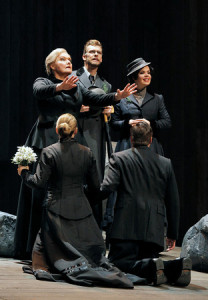 The loving sinner Stepmother, blesses the nearly happy couple before the truths are found out. For another Hedgehog observation of Karita Matilla, please go to http://www.livelyfoundation.org/wordpress/?p=758 Ms Matilla made her debut with the San Francisco Symphony, in the Beethoven Festival, June 17, 2015, singing Ah! Perfido Scene and Aria, Op. 65. In this Jenufa post, photos except the unattributed ones of Ms. Matilla and Janacek, are ©Cory Weaver/SF Opera.
The loving sinner Stepmother, blesses the nearly happy couple before the truths are found out. For another Hedgehog observation of Karita Matilla, please go to http://www.livelyfoundation.org/wordpress/?p=758 Ms Matilla made her debut with the San Francisco Symphony, in the Beethoven Festival, June 17, 2015, singing Ah! Perfido Scene and Aria, Op. 65. In this Jenufa post, photos except the unattributed ones of Ms. Matilla and Janacek, are ©Cory Weaver/SF Opera.
EARLY BIRD DEADLINE APPROACHES!
 Don’t miss the great deals for Early Bird registration. The deadline is June 30. There are meaningful discounts available for all the IDV@SV workshops and classes. Take all five classes in Full Day of Dance© for only $60. You cannot beat that. Take the Monday-Friday Contemporary Technique & Repertory class AND have the opportunity to perform; sign up early and save $30. You could use that $30 for the Physical Comedy workshop. Physical Comedy offers half price for a second student: $30 for one person and only $15 for a companion. This offer will continue through the summer. How can you pass it up? Megan says you will learn slaps and falls! Has anyone else offered to teach you slaps and falls at such a low price? I seriously doubt it! Register now; just scroll down a little to find the reg form. You can copy it and email it to livelyfoundation@sbcglobal.net So much dance, beauty and fun awaits you!!! but the Early Bird won’t wait.
Don’t miss the great deals for Early Bird registration. The deadline is June 30. There are meaningful discounts available for all the IDV@SV workshops and classes. Take all five classes in Full Day of Dance© for only $60. You cannot beat that. Take the Monday-Friday Contemporary Technique & Repertory class AND have the opportunity to perform; sign up early and save $30. You could use that $30 for the Physical Comedy workshop. Physical Comedy offers half price for a second student: $30 for one person and only $15 for a companion. This offer will continue through the summer. How can you pass it up? Megan says you will learn slaps and falls! Has anyone else offered to teach you slaps and falls at such a low price? I seriously doubt it! Register now; just scroll down a little to find the reg form. You can copy it and email it to livelyfoundation@sbcglobal.net So much dance, beauty and fun awaits you!!! but the Early Bird won’t wait.


